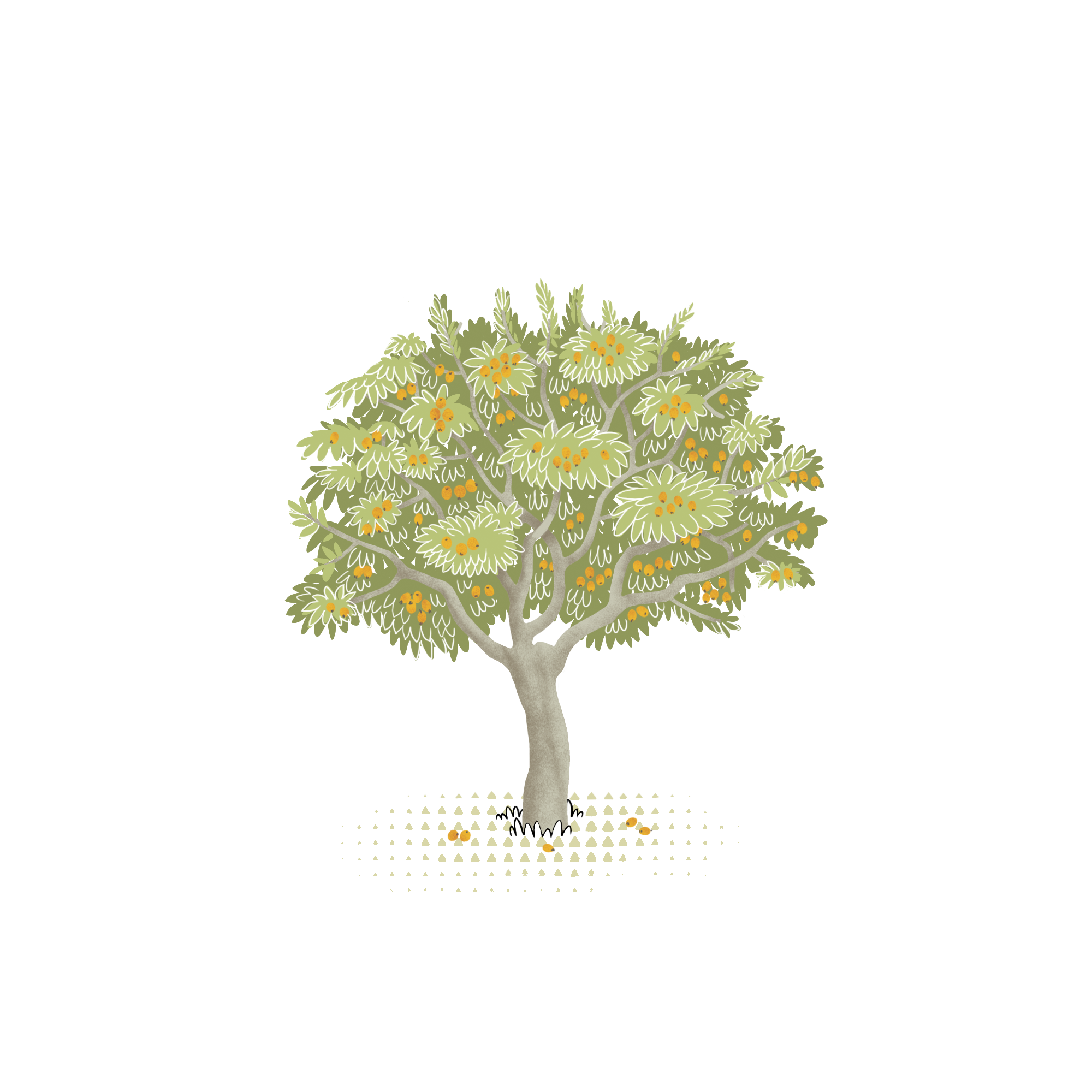
Adopt or gift a Medlar
Lovers of good things
Who wants to say "thank you"
In the past, a medlar was planted in Italian backyards as it was believed to bring good luck and chase away witches. It was also used by farmers to mark the transition from one season to the next: of all fruit trees, it is the first to flower and the last to ripen. The berries should be harvested between late October and November while they are still firm and should be stored to ripen in straw, in a dry and ventilated place. Ripening will make them ready for eating around December.
Features
Scientific name: Mespilus germanica
Common name: Medlar
Fruit tree belonging to the Rosaceae family and the genus Mespilus. It is also called Germanic or European medlar and its fruit is called medlar as well. The fruits are small, round, rough-skinned, light green-gray-brown knobs, often covered with very fine hairs. They range in size from 2 to 3 cm in diameter.
Fun facts
Medlars, native to the Eastern world, have always been used as a remedy to ward off negativity and evil influences. The tree was a kind of "good luck charm" to be planted in the garden, and from its bloom one could tell – more or less – how the harvest would be. In fact, in past centuries it was believed that any country house that had a medlar tree in its yard could ward off witches and bad luck. Loquats are also known as the "fruit of patience" probably because in order to savor them-after harvesting-the fruit must spend some time during which it must be stored in dry places.
Properties and Uses
Typical of winter, regular consumption of medlars results in many health benefits. Medlars have high vitamin A and C content and are perfect as a satisfying snack.
Why adopt or gift a Medlar: what makes it unique
of CO2 captured over a year
reachable height
maximum life expectancy
fruit produced per year
Forests where you can grow your own Medlar, adopting it or giving it as a gift.

Bosco dei Sette Cieli
 Italia
Italia
Join our community
Do you like trivia about trees and forests, and want to know how you can help create a greener future and help nature?
Sign up for our newsletter!
A couple of times a month you will receive news, scientific insights without catastrophizing, offers to adopt our trees, and news from our projects. With WOWnature, helping the planet becomes a positive experience. Every tree is a step toward a better future.


